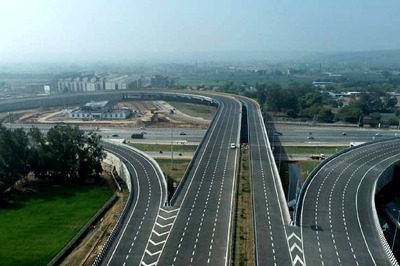
views
A powerful 7.8 magnitude earthquake hit southern Turkey and northern Syria early Monday, toppling buildings and triggering a frantic search for survivors in the rubble in cities and towns across the area. Over 4,000 were killed and thousands injured, and the toll is rising, with many aftershocks reported as well.
The quake, felt as far away as Cairo, was centered north of the city of Gaziantep in an about 90 kilometers (60 miles) from the Syrian border.
According to Google Maps, Gaziantep is located approximately 11 hours away from the Aegean Sea region, and 12 hours from Marmara, where a massive earthquake was predicted in December 2022 by an earthquake expert, according to a Turkish pro-government daily the Daily Sabah.
Another Dutch researcher Frank Hoogerbeets, who works for organisation Solar System Geometry Survey (SSGS) based in Netherlands had apparently predicted the quake on February 3, 2023, just three days ago.
Using his Twitter account Dutch expert Frank Hoogerbeets wrote, “Sooner or later there will be a ~M 7.5 earthquake in this region (South-Central Turkey, Jordan, Syria, Lebanon).”
Sooner or later there will be a ~M 7.5 #earthquake in this region (South-Central Turkey, Jordan, Syria, Lebanon). #deprem pic.twitter.com/6CcSnjJmCV— Frank Hoogerbeets (@hogrbe) February 3, 2023
SSGS describes itself as a research institute for monitoring geometry between celestial bodies related to seismic activity on Twitter.
What Was the Prediction?
After Frank Hoogerbeets’ prediction went viral, he responded to the earthquake, saying, “As I stated earlier, sooner or later this would happen in this region, similar to the years 115 and 526. These earthquakes are always preceded by critical planetary geometry, as we had on 4-5 Feb.”
My heart goes out to everyone affected by the major earthquake in Central Turkey.As I stated earlier, sooner or later this would happen in this region, similar to the years 115 and 526. These earthquakes are always preceded by critical planetary geometry, as we had on 4-5 Feb.
— Frank Hoogerbeets (@hogrbe) February 6, 2023
However, some users have questioned the Dutch expert’s prediction, calling it pseudoscience.
And in another prediction, Serkan Içelli, an expert in mining geology, earth sciences, and earthquakes told Daily Sabah in December 2022 that a “big one,” or a massive earthquake was expected for Turkey’s Marmara region, where the nation’s most populous metropolis, Istanbul, is situated, and would ‘probably shortly strike the Aegean region’.
Içelli had predicted that the significant earthquake would strike Istanbul and that the Aegean region would see a catastrophic quake.
However, he had stated that the intensity of the earthquake would not exceed over 7.0 on the Richter Scale as ‘the Gölcük earthquakes in 1963 and 1999 significantly reduced the amount of tension in Marmara.’ “Therefore, an earthquake of more than 5.8 to 6.2 in the Marmara Sea is not possible,” he had told the daily.
“The Aegean region is a very complex place for us. Unfortunately, we do not follow that region very well. Especially the area under the island of Crete, called the Hellenic Arc, is dangerously prone to earthquakes. This region has previously produced earthquakes with a magnitude of 8.0 and is now causing the biggest earthquakes. In terms of our country, a tsunami may occur in parts of Muğla,” he had explained.
“First of all, you need to know the annual sliding rate of that fracture, the earthquake repetition period and the largest earthquake it produced and analyze it with various formulas accordingly,” he had told Daily Sabah.
But Can Earthquakes Actually be Predicted?
According to the USGS, earthquake predictions are not supported by scientific evidence, because earthquakes are a natural phenomenon.
The predictions are too generalised, and if an earthquake occurs that somewhat matches their prognosis, they claim success despite the fact that one or more of their predicted elements differed drastically from what actually transpired, making it a failed prediction, the body states.
Predictions (by non-scientists) typically begin to circulate on social media when anything occurs that is believed to be a harbinger to an imminent earthquake, the report says, adding that the so-called precursor is typically a swarm of minor earthquakes, rising radon levels in surrounding water, strange animal behaviour, increasing magnitudes in moderate-sized events, or a moderate-magnitude event that occurs infrequently enough to imply it may be a foreshock.
Unfortunately, the majority of such precursors frequently occur without being followed by an earthquake, therefore it is impossible to make an accurate prognosis. If there is a scientific basis, a probabilistic forecast may be made instead.
More About SSGEOS and Critical Planet Geometry
SSGEOS describes itself as ‘a research institute for monitoring geometry between celestial bodies related to seismic activity.’
Linking planetary conjunctions to earthquakes, the organisation states, “a first clue that specific geometry in the Solar System may cause larger earthquakes was found on 23 June 2014, when three magnitude 6 earthquakes occurred in the South Pacific, followed by three more in the North Pacific peaking magnitude 7.9, all of which occurred within several hours. It was a sudden seismic increase in a relatively quiet month. It is the ultimate grouping of larger earthquakes, a well-known but unexplained phenomenon in seismology. Using Solar System simulation software, it appears that around 23 June 2014 six celestial bodies were engaged in planetary conjunctions that converged into a near triangle.”
Critical planetary geometry, or critical lunar geometry if the Moon is involved, refers to the unique geometry between celestial planets that is linked to greater earthquakes, the organisation states on its website.
However, greater earthquakes are not usually the result of critical geometry. Sometimes only a small increase in seismic activity, up to magnitude 6.0, is seen, SSGEOS says, adding that in some cases, it appears that there is no seismic increase at all.
“This leads us to the conclusion that the condition of the Earth’s crust, specifically the tension between tectonic plates and whether or not a fault section has reached its strain budget, are crucial factors. This would naturally suggest a connection between electromagnetic charge from the planetary geometry and the development of stress in the Earth’s crust,” it says.
What Does USGS Say About this Correlation?
Seismic activity is equally likely to occur in the morning or evening. Using extensive earthquake catalogues, numerous earlier studies have found no significant relationships between the rate of earthquake occurrence and the semi-diurnal tides, the USGS states.
Recent research, however, have discovered a correlation between earth tides (produced by the moon’s relative location to the earth) and some types of earthquakes, the report says. During periods of higher earth and ocean tides, such as during full or new moon, earthquakes are more likely to occur on shallow thrust faults near the borders of continents and in (underwater) subduction zones, according to one study. Lunar or solar eclipses are, of course, exceptional situations of full and new moon, but they do not have any tide-related impacts that are unique or different from full and new moon.
Earth tides (the surface of the Earth rising and falling by a few centimetres) and ocean tides (the surface of the ocean rising and falling by a metre or more) raise and lower the confining pressure on shallow, dipping faults near continental margins and in subduction zones.
When confining pressure is reduced, faults become unclamped and more susceptible to slip. The chance increases by a factor of 3 at high tides. But you must recognise that the background likelihood in a given location and year is generally very low (fractions of a percent), so that increasing this minuscule probability by a factor of three during high tides still results in a minuscule probability.
Small but significant relationships have also been recorded between semi-diurnal tides and the frequency of aftershocks in certain volcanic locations, such as Mammoth Lakes, the report says.
The moon, sun, and other planets have an effect on the earth’s gravitational field in the form of perturbations (small variations). The relative magnitude of an object’s effect is proportional to its mass and inversely related to its distance from the earth raised to the third power, it adds.
Turkey an Earthquake-prone Zone
Reports point out that Turkey is located in one of the seismically active regions of the planet.
One of the areas affected by the 7.4-magnitude earthquake that struck Turkey in 1999 and was one of the worst in decades was Düzce. Over 17,000 individuals were killed in that earthquake, including about 1,000 in Istanbul. READ MORE
Experts have long cautioned that Istanbul, which has permitted extensive building without safety safeguards, may be completely destroyed by a huge earthquake, a report by the Guardian said.
In January 2020, a magnitude-6.8 earthquake struck Elaz, killing about 40 people. In addition, a magnitude 7.0 earthquake that struck the Aegean Sea in October of that same year left more than 1,000 people injured.
This report was originally published on February 6, 2023.
Read all the Latest Explainers here




















Comments
0 comment